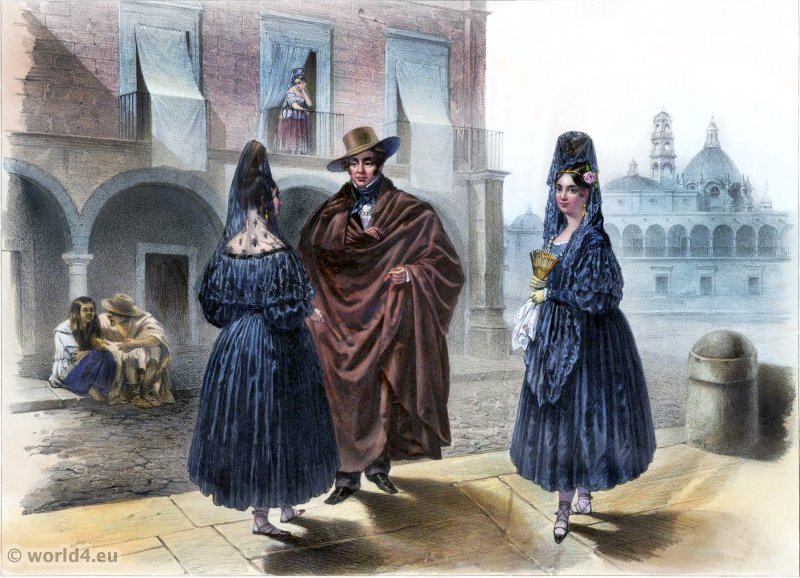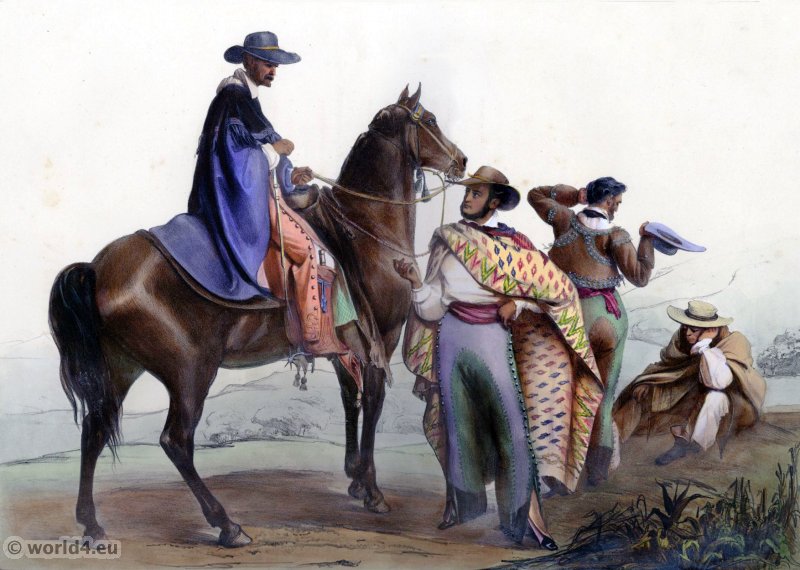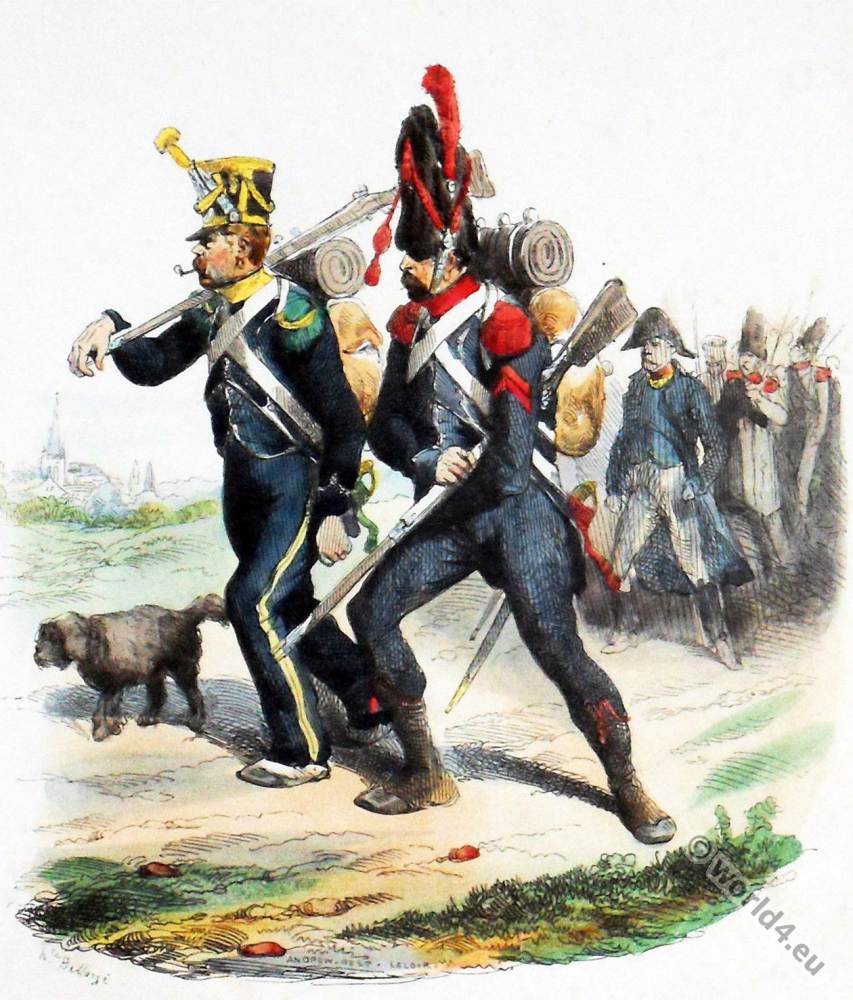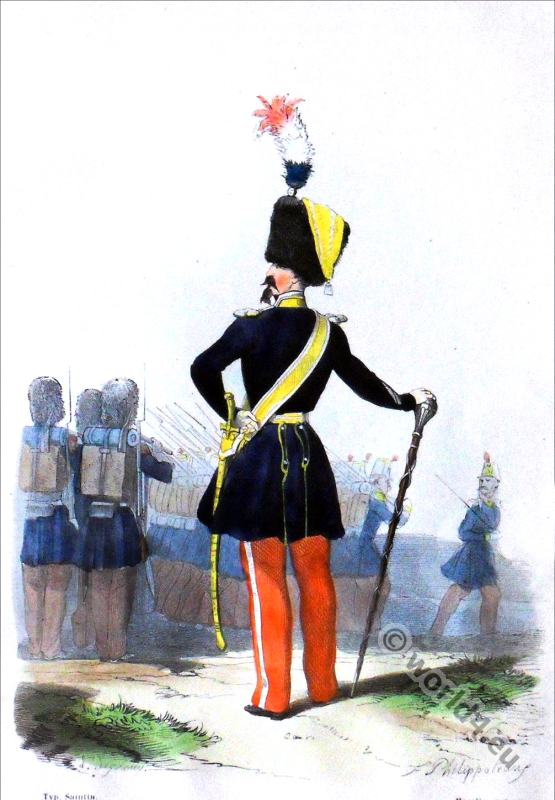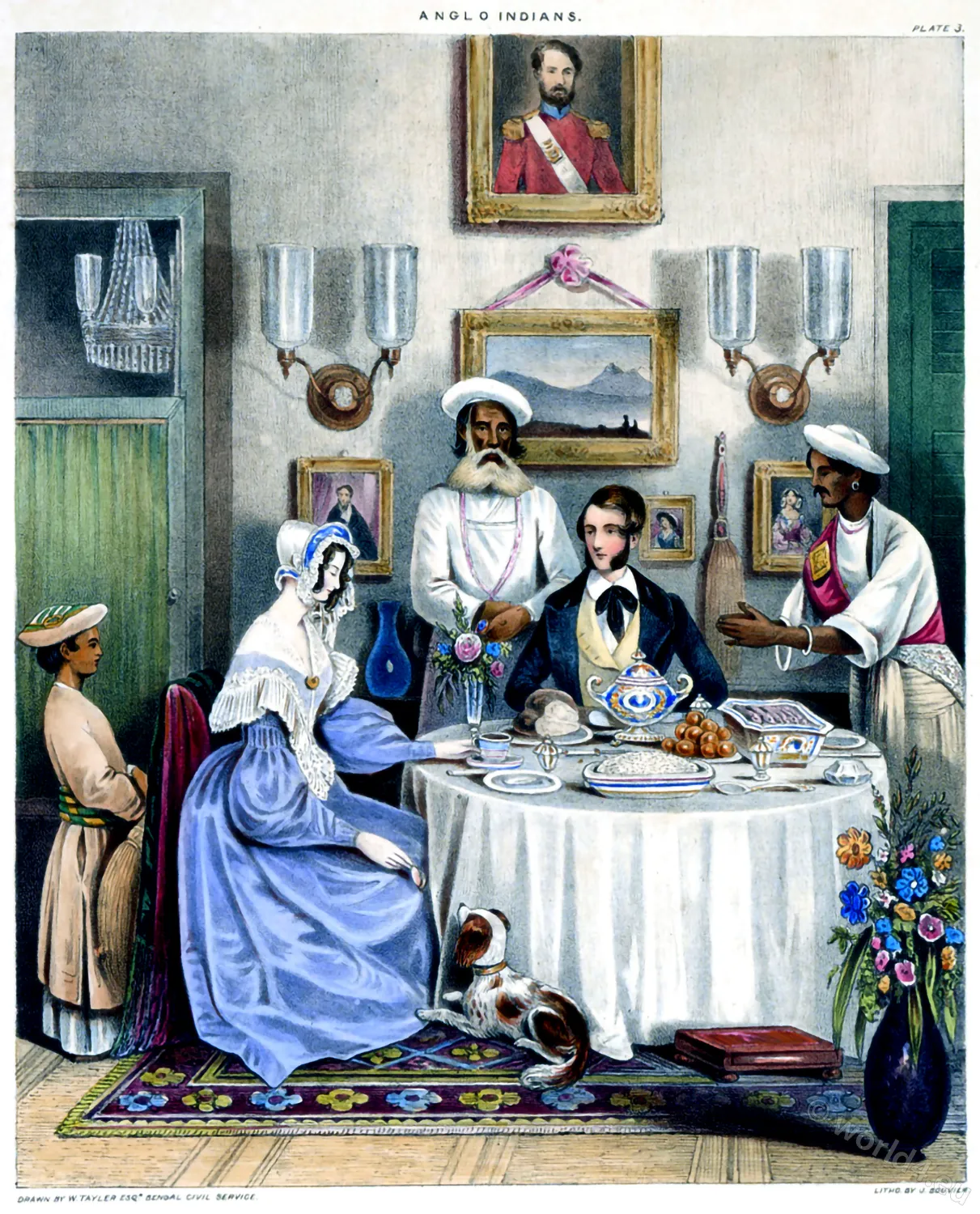La Mantilla. Traje por la mañana.
The Mantilla. Mexican Morning Suit.
The Mantilla (Spanish for “small blanket”), also partly called Mantille, was first a veil worn by Spanish women from the Middle Ages onwards, which covered the head and neck up to the shoulders. The cloth is still worn today for festive dress and is mostly made in lace technique. In some parts of Spain, the colour of the mantilla indicated the marital status of the woman wearing it: Black signified that the woman was married, while white symbolized virginity.
From about the middle of the 18th century, a light lady’s coat, and later on even a back coat of light silk stuff, which reached up to the knees, was also called a mantilla. This term was adopted by fashion as a general word for a light silk fabric.
In the Catholic Church, the Codex Iuris Canonici (CIC) of 1917 stipulated that women had to wear a communion veil (mantilla or other headgear) at Holy Mass and in the presence of the Blessed Sacrament.
By the CIC of 1983 this Canon was completely cancelled (abrogated). The CIC of 1983 does not mention this issue – the wearing of a communion veil is no longer obligatory for women in Holy Mass. During private audiences with the Pope, the wearing of a mantilla is still part of the protocol. The tradition of the so-called Privilège du blanc allows queens and princesses of Catholic royal houses (and only them) to wear white mantilles and dresses during Pope audiences and Holy Mass at the inauguration of a Pope.
Original Text:
LA MANTILLA.
Siendo este traje enteramente español, no ofrece ningun interés de novedad, de modo que nada hay que decir sobre él. Todas las damas mejicanas han adoptado la mantilla como traje de mañana; despues de las dos de la tarde se visten á la moderna; pero no usando de gorro como las damas européas, no salen smoen coche, y aun en los paseos públicos raras veces se encuentra una señora á pié, excepto de noche, cuando el adorno exije ménos cuidado; entónces suelen pasearse bajo los portales que encuadran las plazas públicas, con la cabeza cubierta de un schal ó tápalo.
Méjico no es precisamente el pais de las bellezas femeninas. Las mujeres son pequeñas, y las narices como la boca, conservan en muchas un tipo indiano. Todas tienen hermosos ojos, las espaldas redondas, el pecho y la cintura bien hechos, y un pié que puede servir de modelo, por lo que tienen buen cuidado las señoritas de llevar unos zapatos muy bajos. Tienen mucho garbo y el andar gracioso y decente.
Las Méjicanas son de un carácter dulce y afable siempre calmadas y modestas en su conversacion, tienen un trato franco y natural, aún con las personas mas estrañas. Verdad es que aman mucho el adorno, pero tambien lo es que se sacrificarán por su esposo y por su familia; si hay algunas veces abandono ó desórden doméstico, se puede muchas veces atribuirlo á la conducta del marido.
Free translation of the above Spanish original text:
Mexican ladies have mostly adopted the mantilla as their morning dress; after two o’clock in the afternoon they dress in a modern style, but do not wear a hat like the European ladies, they do not travel by car, and even on public walks a lady is seldom found on foot, except at night when her wardrobe requires less care; therefore they usually walk under the portals that frame the public squares, covering their head with a scarf or shawl, the tápalo.
Mexico is not exactly the land of female beauty. The women are small, and their noses, like their mouths, are often influenced by Indian characteristics. They all have beautiful eyes, a round back, a well-formed chest and waist and a foot that can serve as a model, so the ladies take good care to wear very low shoes. They have a lot of verve and a pleasant gait.
Mexican women have an amiable and friendly character, always calm and modest in conversation, they are open and of course deal with the strangest people. It is true that they love jewelry very much, but it is also true that they will sacrifice themselves for their husband and family; if there is sometimes abandonment or domestic unrest, this can often be attributed to the husband’s behavior.
Source: Voyage pittoresque et archéologique dans la partie la plus intéressante du Mexique by Carl Nebel, 1836.
Continuing
Discover more from World4 Costume Culture History
Subscribe to get the latest posts sent to your email.

